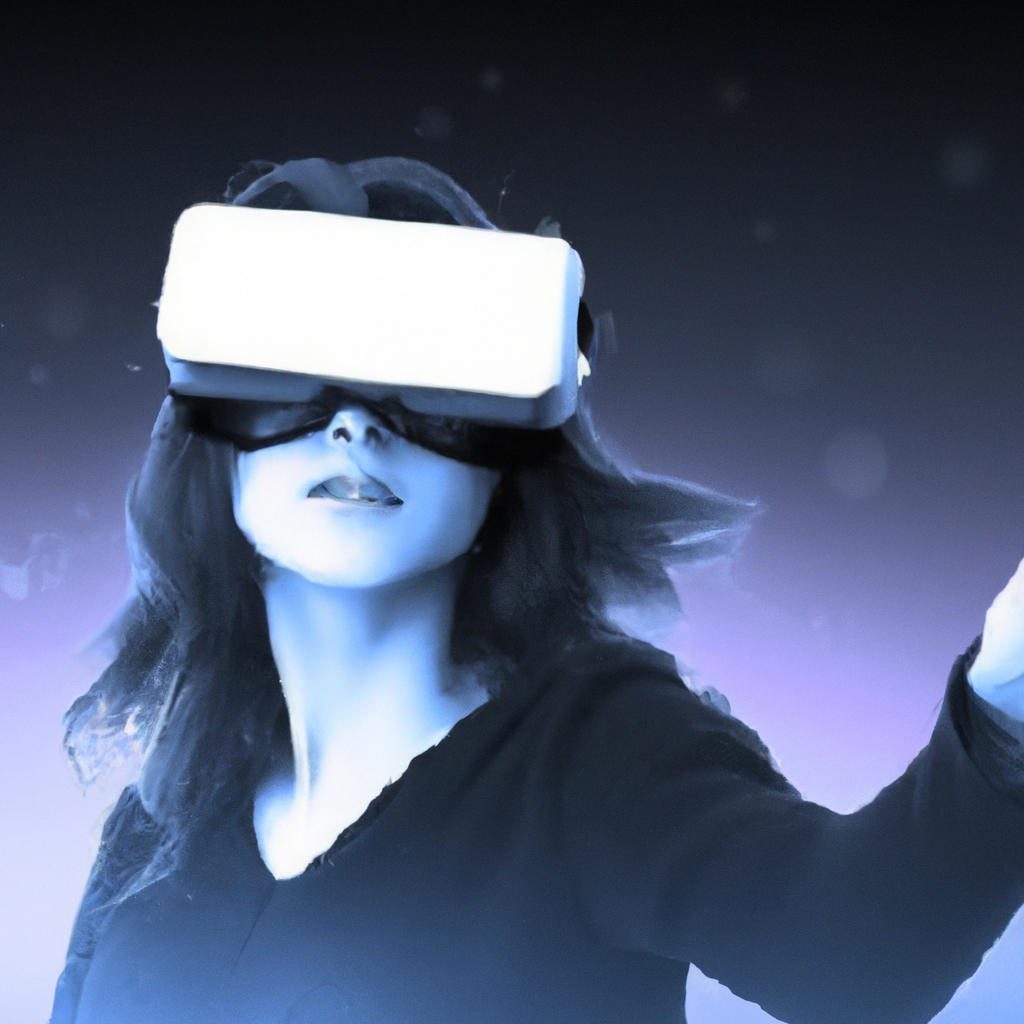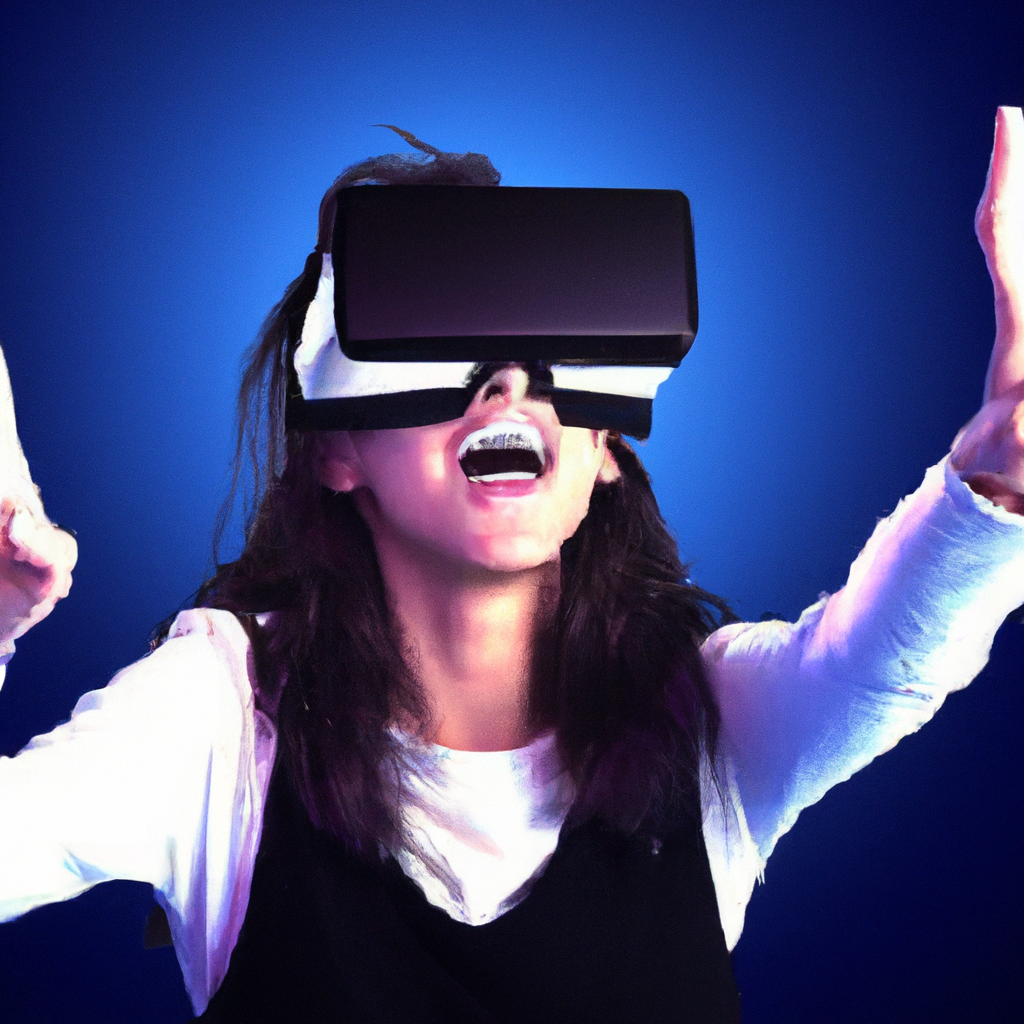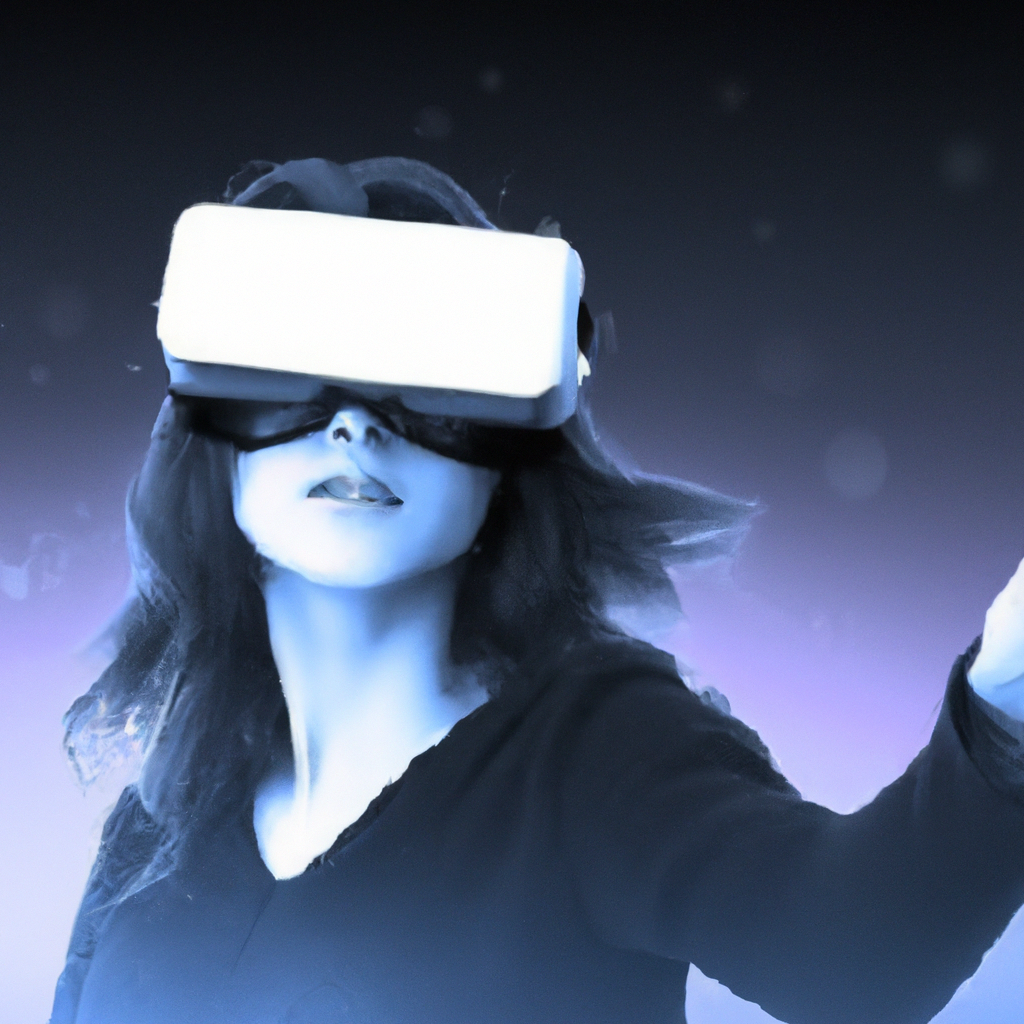Imagine a world where education becomes an immersive and engaging experience that captivates your attention and sparks your curiosity. The Gamification of Education: Learning Through Virtual Reality explores the innovative integration of technology and learning, allowing you to step into a virtual realm where textbooks come to life and history becomes an adventure. With virtual reality as a powerful tool, education transcends the boundaries of traditional classrooms, making learning an exciting and interactive journey. Get ready to embark on an extraordinary educational experience that combines the thrill of gaming with the pursuit of knowledge.

Concept of Gamification in Education
Understanding gamification
Gamification in education refers to the incorporation of game elements and mechanics into educational activities and processes to enhance the learning experience and promote engagement. By leveraging the motivational aspects of games, such as competition, points, and rewards, gamification aims to make learning more enjoyable, immersive, and interactive for students. It creates an environment where students are actively involved in the learning process, motivated to achieve educational goals, and provided with immediate feedback to track their progress.
Historical context and evolution of gamification in education
The concept of gamification in education has roots in both traditional game-based learning and the application of game elements to non-game contexts. Game-based learning has been used for decades, where games specifically designed to teach certain concepts or skills are utilized in classrooms. However, with the development of technological advancements, gamification in education has evolved to include various digital tools and platforms.
Advantages of gamification in learning
Gamification has several advantages in the context of learning. Firstly, it increases student engagement and motivation, as students are naturally drawn to the competitive and interactive nature of games. Gamification also promotes a sense of achievement and progression, as students earn points or badges for completing tasks or reaching milestones. It enhances collaboration and social interaction among students, fostering teamwork and peer learning. Additionally, gamification allows for personalized learning experiences, as students can choose activities and progress at their own pace. Overall, gamification in education has the potential to make learning more enjoyable, effective, and memorable for students.
In-depth Understanding of Virtual Reality (VR)
Definition of Virtual Reality
Virtual Reality (VR) refers to the technology that immerses users in a simulated or virtual environment, often created through the use of computer-generated visuals, sounds, and interactive elements. VR typically involves the use of specialized equipment, such as headsets and controllers, to provide a fully immersive and interactive experience for the user. By simulating real-world or fictional scenarios, VR aims to create a sense of presence and allow users to explore and interact with the virtual environment as if it were real.
How VR works in a real-world scenario
In a real-world scenario, VR works by combining various technological components and software. A user wearing a VR headset is completely immersed in a virtual environment, where they can move and interact with objects and characters. The VR headset tracks the movement of the user’s head, allowing them to look around and explore the virtual world in a natural way. Hand controllers or body tracking systems enable users to manipulate objects and interact with the virtual environment. The visuals and audio are rendered in real-time, providing a seamless and immersive experience for the user.
Different components of Virtual Reality system
A complete Virtual Reality system consists of several components. The primary component is the VR headset, which is worn by the user and provides the visual and auditory experience. The headset may include built-in displays, lenses, and sensors to track head movement accurately. Additionally, hand controllers or body tracking systems are used to track the movement of the user’s hands or body, enabling interaction within the virtual environment. A powerful computer or gaming console is also necessary to render the high-quality graphics and run the VR software smoothly. Lastly, external devices, such as tracking sensors or cameras, may be required to accurately track the user’s movements in physical space.
Role of Virtual Reality in Education
Utilizing VR in classroom teaching
Virtual Reality has revolutionized classroom teaching by providing immersive and interactive experiences for students. Through VR, students can explore historical landmarks, travel to different countries, or even dive into the depths of the ocean, all from the comfort of their classrooms. This hands-on and experiential learning approach enhances students’ understanding and retention of concepts, making the learning process more meaningful and engaging. Teachers can incorporate VR experiences as part of their lessons, allowing students to visualize and experience abstract or complex topics in a tangible way.
VR and special education
Virtual Reality has immense potential in special education, catering to the diverse needs of students with disabilities or learning difficulties. By creating inclusive virtual environments, VR can provide a safe space for students to explore, learn, and interact without the constraints they may face in the physical world. For example, students with mobility impairments can explore virtual museums or historical sites, students with autism can practice social interactions in simulated scenarios, and students with attention disorders can benefit from the immersive and focused nature of VR experiences. VR offers personalized and adaptive learning opportunities for special education, promoting individual growth and success.
Benefits of VR in skill acquisition
Virtual Reality plays a crucial role in enhancing skill acquisition among students. By simulating real-world scenarios and challenges, VR allows students to practice and develop specific skills in a safe and controlled environment. For instance, medical students can perform virtual surgeries to improve their surgical skills, engineering students can simulate complex engineering processes, and language learners can practice conversations with virtual native speakers. VR enhances experiential learning, providing students with realistic and practical experiences that foster skill development, confidence, and competence.
Synergy of Gamification and Virtual Reality in Education
Concept of immersive learning
The combination of gamification and Virtual Reality brings about the concept of immersive learning. Immersive learning refers to the integration of interactive and engaging experiences in a virtual environment, where learners are completely immersed and actively involved in the learning process. By incorporating game elements, such as challenges, rewards, and progress tracking, into the immersive VR environment, learners are motivated, captivated, and fully engaged in their educational journey. Immersive learning using gamified VR maximizes student involvement, making learning more enjoyable, impactful, and effective.
Benefits of coupling VR and gamification
Coupling Virtual Reality and gamification offers numerous benefits for education. Firstly, it enhances student motivation and engagement by providing a stimulating and enjoyable learning experience. The immersive nature of VR combined with the competitive elements of gamification appeals to the natural curiosity and desire for achievement among students. Secondly, this synergy promotes active learning and critical thinking as students navigate and interact within the immersive virtual environments, solving problems, making decisions, and applying their knowledge. Thirdly, the coupling of VR and gamification provides immediate feedback and progress tracking, allowing students to monitor their performance, set goals, and improve continuously. It fosters a sense of autonomy and empowerment in the learning process.
Potential challenges in implementation
Implementing the synergy of VR and gamification in education does come with some challenges. Firstly, the cost of VR equipment, software, and development can be a barrier for schools or institutions with limited resources. However, as VR technology advances, the cost is expected to decrease over time. Secondly, proper training and support for educators is crucial to ensure effective integration and utilization of VR and gamification strategies. Educators need to be familiar with the technology, have access to relevant resources, and receive training to create meaningful gamified VR experiences. Additionally, addressing accessibility concerns, such as motion sickness or physical discomfort for some individuals in VR experiences, is essential to ensure equitable opportunities and user comfort.

Impact of VR Gamification on Student Engagement
Improved participation rates
The combination of Virtual Reality and gamification has shown a significant positive impact on student participation rates. The interactive and immersive nature of VR coupled with the engaging elements of gamification results in increased student involvement and active participation. Students are more likely to actively engage with gamified VR experiences, as they feel motivated by the opportunity to earn rewards, achieve goals, and compete with their peers. This heightened engagement translates into higher participation rates, as students become more invested in the learning process, take ownership of their education, and willingly participate in activities and discussions.
Promoting collaborative learning
VR gamification encourages and enhances collaborative learning among students. The shared immersive experiences and gamified challenges create a sense of camaraderie and teamwork. Students can work together in groups, solving problems, overcoming obstacles, and achieving common goals within the virtual environment. Collaboration in VR gamified learning leads to the exchange of ideas, effective communication, and cooperation among students. It fosters a supportive and inclusive learning environment where students learn not only from the virtual experience but also from each other.
Increasing intrinsic motivation among learners
One of the key benefits of VR gamification is its ability to increase intrinsic motivation among learners. Intrinsic motivation refers to the internal drive and curiosity that stimulates individuals to engage in an activity for its own sake. Through gamification, students are intrinsically motivated to learn and achieve, as they find the virtual experiences enjoyable and rewarding. The immersive nature of VR makes learning more personalized, exciting, and meaningful, igniting students’ natural desire to explore, discover, and master new concepts. This intrinsic motivation paves the way for lifelong learning and a genuine passion for knowledge acquisition.
Educational Areas where VR Gamification is More Effective
Usage in STEM subjects
VR gamification has proven to be particularly effective in STEM (Science, Technology, Engineering, and Mathematics) subjects. Through VR, students can engage in virtual experiments, simulations, and problem-solving activities that require a deep understanding of scientific concepts and principles. For instance, students can explore virtual ecosystems, conduct virtual chemistry experiments, or solve physics puzzles. The gamified elements, such as points, rankings, and challenges, enhance student motivation and curiosity, making STEM learning more appealing and exciting.
Role in history, geography, and culture studies
Virtual Reality gamification holds great potential in history, geography, and cultural studies. Students can travel back in time and virtually visit historical events and landmarks, gaining a deeper understanding of different cultures and civilizations. They can explore ancient civilizations, experience important historical events, and witness the geographical features of different regions. By making history, geography, and culture studies interactive and immersive, VR gamification sparks curiosity, promotes critical thinking, and enhances empathy and cultural awareness among students.
Potential in language learning
VR gamification offers promising opportunities for language learning. By creating virtual scenarios and interactive conversations, students can practice and improve their language skills in a realistic and engaging environment. Language learners can engage in role-playing activities with virtual avatars, participate in interactive language games, and even experience virtual language immersion by exploring virtual communities or countries. The gamified elements of virtual rewards, achievements, and challenges provide immediate feedback and constant motivation, fostering language fluency and proficiency.

Current Examples of VR Gamification in Education
Popular Virtual Reality learning apps
Several virtual reality learning apps have gained popularity in the educational sphere. For example, Google Expeditions offers immersive virtual field trips, allowing students to explore various locations across the globe. Another popular app, Oculus Education, provides a collection of educational VR experiences across different subjects, including sciences, arts, and history. Nearpod VR enables teachers to create interactive VR lessons and presentations, engaging students in a gamified learning experience. These apps showcase the potential and versatility of VR gamification in education.
Schools utilizing VR gamified learning
Various schools around the world have embraced VR gamified learning approaches in their classrooms. For instance, Pineapple Cove Classical Academy in the United States introduced a gamified VR program, where students explore ancient civilizations and complete missions as virtual archaeologists. In Finland, the New Nordic School utilizes VR gamification for collaborative problem-solving activities, allowing students to work together to solve complex math problems within the virtual environment. These examples demonstrate how VR gamification is being integrated into educational institutions to enhance learning outcomes.
Success stories from around the globe
There are numerous success stories from around the globe showcasing the positive impact of VR gamification in education. For instance, in Brazil, a school implemented a VR game to teach biology concepts, resulting in significantly improved student performance and engagement. In Australia, a language learning center incorporated VR language immersion experiences with gamified elements, leading to notable improvements in language proficiency and confidence among students. These success stories highlight the potential of VR gamification to transform the learning landscape and empower students with immersive, interactive, and effective educational experiences.
Potential Future of Virtual Reality in Gamified Education
Advancements in VR technology
The future of Virtual Reality in gamified education holds immense potential, driven by advancements in VR technology. The constant development of hardware, software, and content creation tools is making VR more accessible, affordable, and user-friendly. Advancements in display resolution, processing power, and wireless connectivity will enhance the immersion and realism of VR experiences. The integration of augmented reality (AR) and mixed reality (MR) with VR will further expand the possibilities for gamified education, blending the physical and virtual worlds. As VR technology continues to evolve, educational institutions will have greater opportunities to harness its benefits in gamified learning.
Challenges in broader implementation
However, there are challenges to overcome for the broader implementation of VR gamified education. The cost of acquiring and maintaining VR equipment and software can be a limiting factor for many schools and educational institutions. Ensuring equitable access to VR experiences across different socio-economic backgrounds and geographical locations should be a priority. Additionally, developing high-quality and curriculum-aligned VR content for diverse educational contexts requires collaboration between educators, developers, and subject matter experts. Standardizing and optimizing VR educational experiences to cater to different learning styles and needs is another challenge that needs to be addressed.
Predicted impact on future educational models
The potential impact of VR gamification on future educational models is vast. As VR becomes more accessible and integrated into classrooms, it has the potential to transform traditional educational models. The immersive and interactive nature of VR gamification enables personalized and adaptive learning experiences, catering to individual student needs, interests, and learning styles. VR gamified learning can facilitate the shift from passive consumption of information to active, hands-on learning, where students become co-creators of knowledge. It encourages critical thinking, problem-solving, and creativity, fostering the development of essential 21st-century skills. Virtual Reality is poised to revolutionize education, making learning more engaging, relevant, and impactful.
Role of Educators in VR Gamified Education
Shift in teaching methodologies
The integration of VR gamification in education necessitates a shift in teaching methodologies. Educators need to adapt their pedagogical approaches to make the most of the immersive and interactive learning experiences enabled by VR. They should embrace a facilitator role, guiding students through the virtual environment, encouraging exploration, and providing timely feedback. Educators need to design and curate VR content that aligns with learning objectives, promotes critical thinking, and engages students in meaningful ways. This shift in teaching methodologies empowers educators to become facilitators of active and immersive learning experiences.
Teacher training for VR tools
To effectively utilize VR gamified education, educators need adequate training and support for using VR tools and technologies. Educator training programs should focus on familiarizing teachers with VR hardware, software, and content creation tools. Educators need to understand how to integrate gamification elements into VR experiences and design meaningful learning activities within the virtual environment. By equipping educators with the necessary skills and knowledge, training programs can ensure successful implementation of VR gamified education in classrooms, maximizing its benefits for both teachers and students.
Balancing traditional and VR gamified teaching
While VR gamified education has numerous advantages, it is important to strike a balance between traditional teaching methods and the integration of VR gamification. Educators should consider the educational objectives, subject matter, and the specific needs of their students when deciding how to incorporate VR gamification into their teaching practices. While immersive VR experiences can be highly engaging, they should be used strategically to complement and enhance traditional teaching methods, rather than replace them entirely. This balance allows educators to harness the benefits of both approaches and create a holistic learning environment for their students.
Questions and Critiques of VR Gamified Education
Accessibility and equality concerns
One important question surrounding VR gamified education is the issue of accessibility and equality. While VR technology has become more affordable, there are still socioeconomic and geographical barriers that may limit access to VR experiences for some students. Ensuring equal access and opportunities for all learners is crucial to prevent further educational disparities. Schools and institutions need to invest in VR equipment, provide support, and explore partnerships to ensure that VR gamified education is accessible to students from all backgrounds.
Debate over efficacy of gamified education
The efficacy of gamified education, including VR gamification, has been a subject of debate. Critics argue that the use of game elements may distract from the actual learning objectives and prioritize extrinsic motivation over intrinsic learning. It is essential to evaluate the effectiveness of gamified education in terms of learning outcomes and engagement. Continuous research and assessment are needed to determine the impact of VR gamification on student learning, skill acquisition, and long-term knowledge retention. Educators and researchers should collaborate to gather empirical evidence and explore best practices for integrating gamification effectively into educational contexts.
Addressing physical health and safety issues in VR learning
VR learning experiences come with physical health and safety considerations. Some individuals may experience motion sickness, discomfort, or fatigue when using VR headsets for extended periods. It is crucial to address these issues to ensure the well-being of students. Implementing guidelines for appropriate usage, scheduling breaks, and providing proper support and resources are necessary to promote a safe and healthy VR learning environment. Educators should also be trained to identify and address any physical discomfort or health concerns that may arise during VR experiences.
In conclusion, the combination of gamification and Virtual Reality holds tremendous potential for revolutionizing education. Gamification enhances motivation, engagement, and participation, while Virtual Reality provides immersive and interactive experiences that deepen learning. Together, they create a powerful synergy that maximizes student involvement, promotes collaborative learning, and increases intrinsic motivation. VR gamification is particularly effective in STEM subjects, history, geography, culture studies, and language learning. Current examples and success stories highlight the positive impact of VR gamification in education. As VR technology advances, it is important to tackle challenges related to cost, training, accessibility, and content development to ensure broader implementation. The future of VR gamified education holds promise, transforming educational models and empowering students with immersive, personalized, and impactful learning experiences. Educators play a crucial role in adapting their teaching methodologies, receiving appropriate training, and striking a balance between traditional and VR gamified teaching. Questions and critiques related to accessibility, efficacy, and physical well-being in VR learning should be addressed to ensure equitable and productive educational experiences. With careful implementation and continuous research, VR gamification can revolutionize education, creating a more engaging, inclusive, and effective learning landscape for all.










